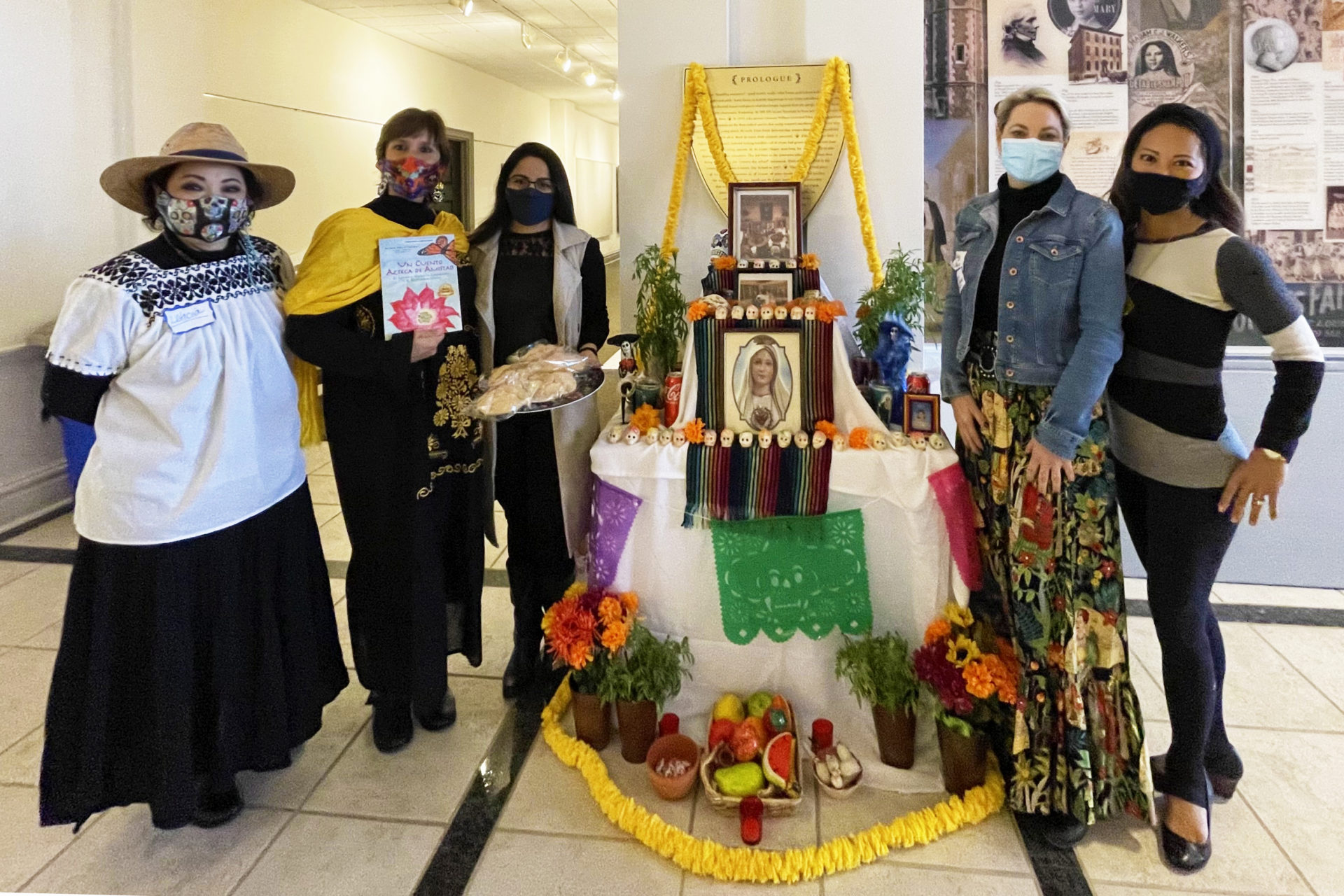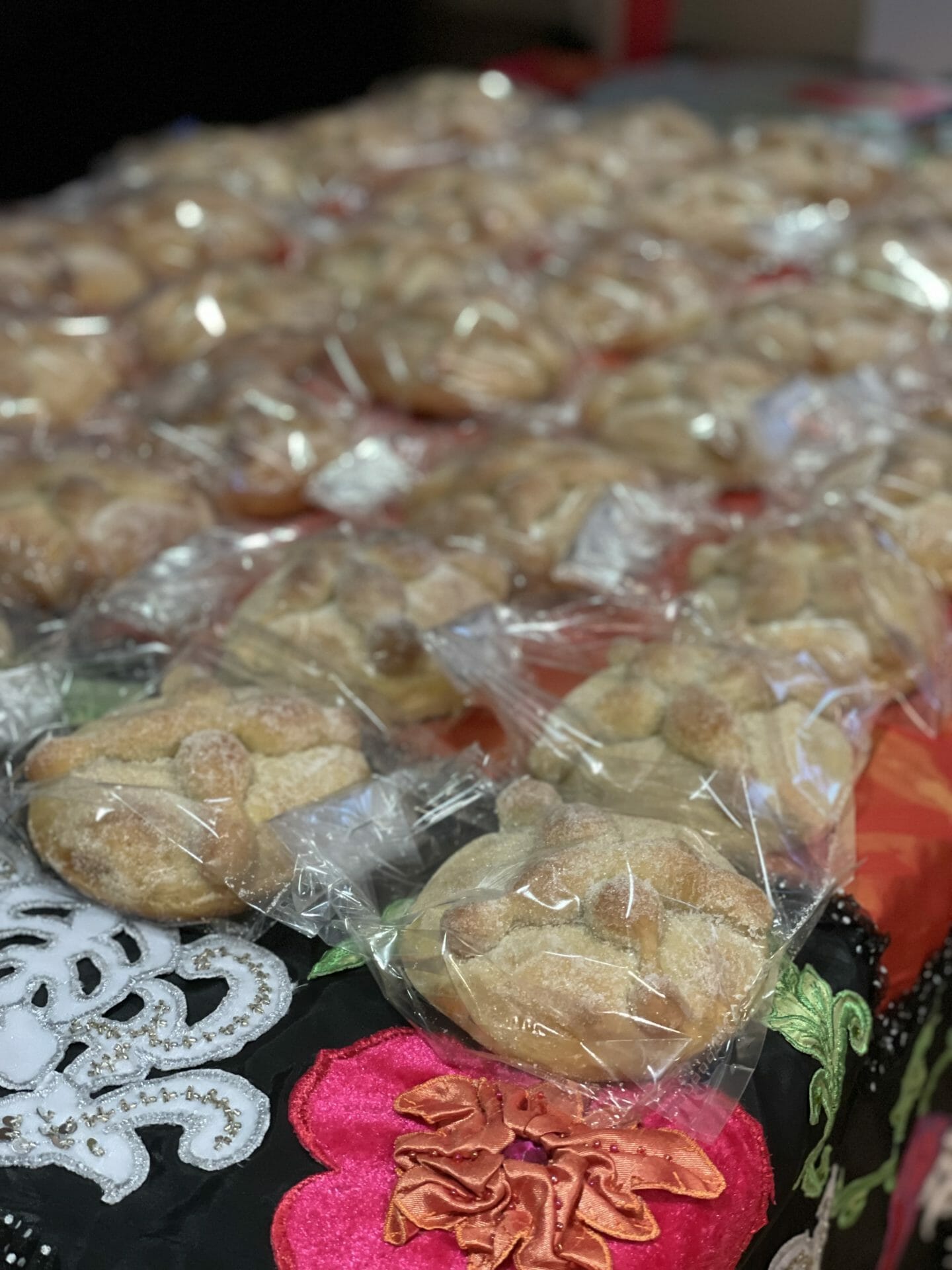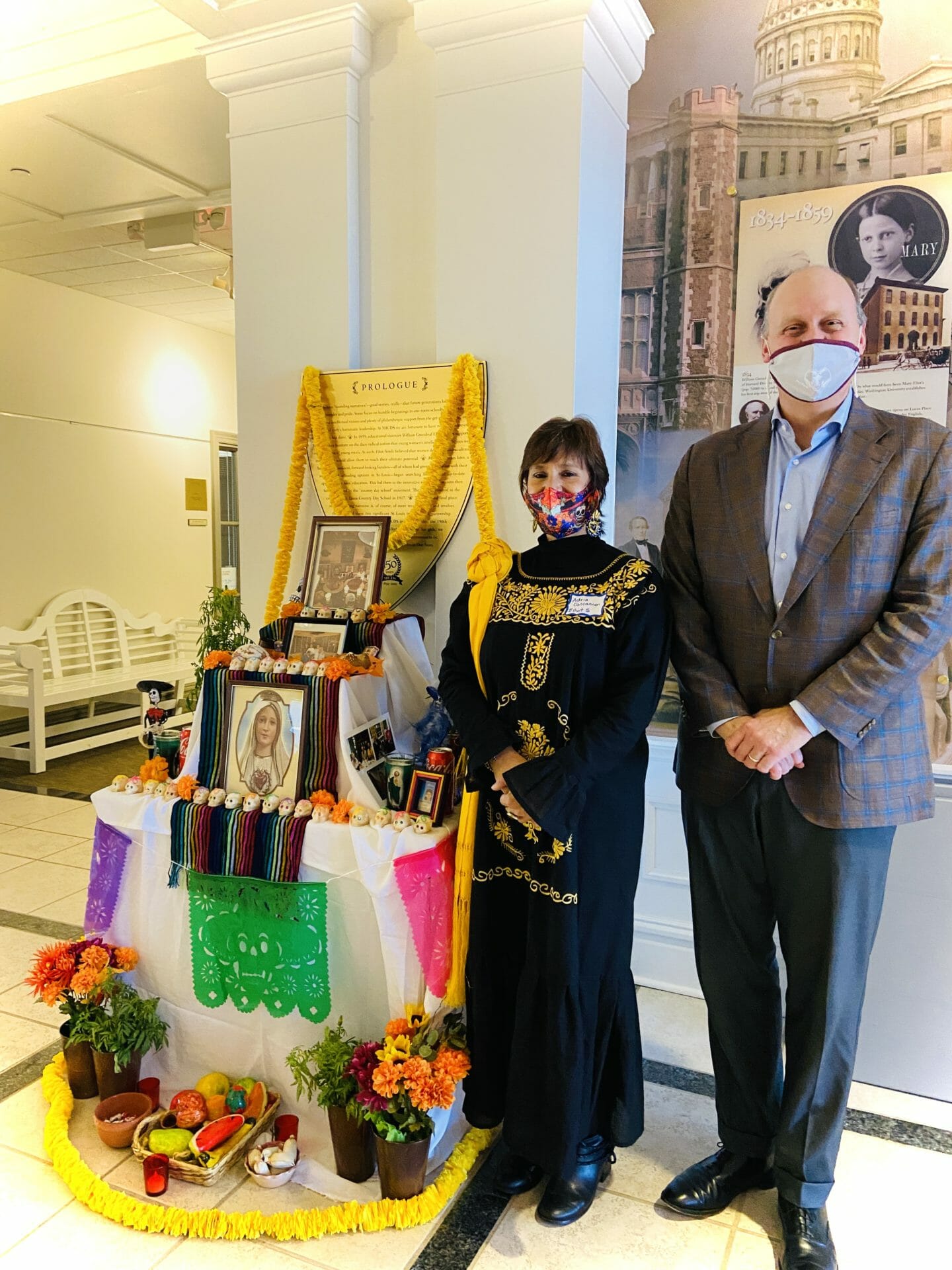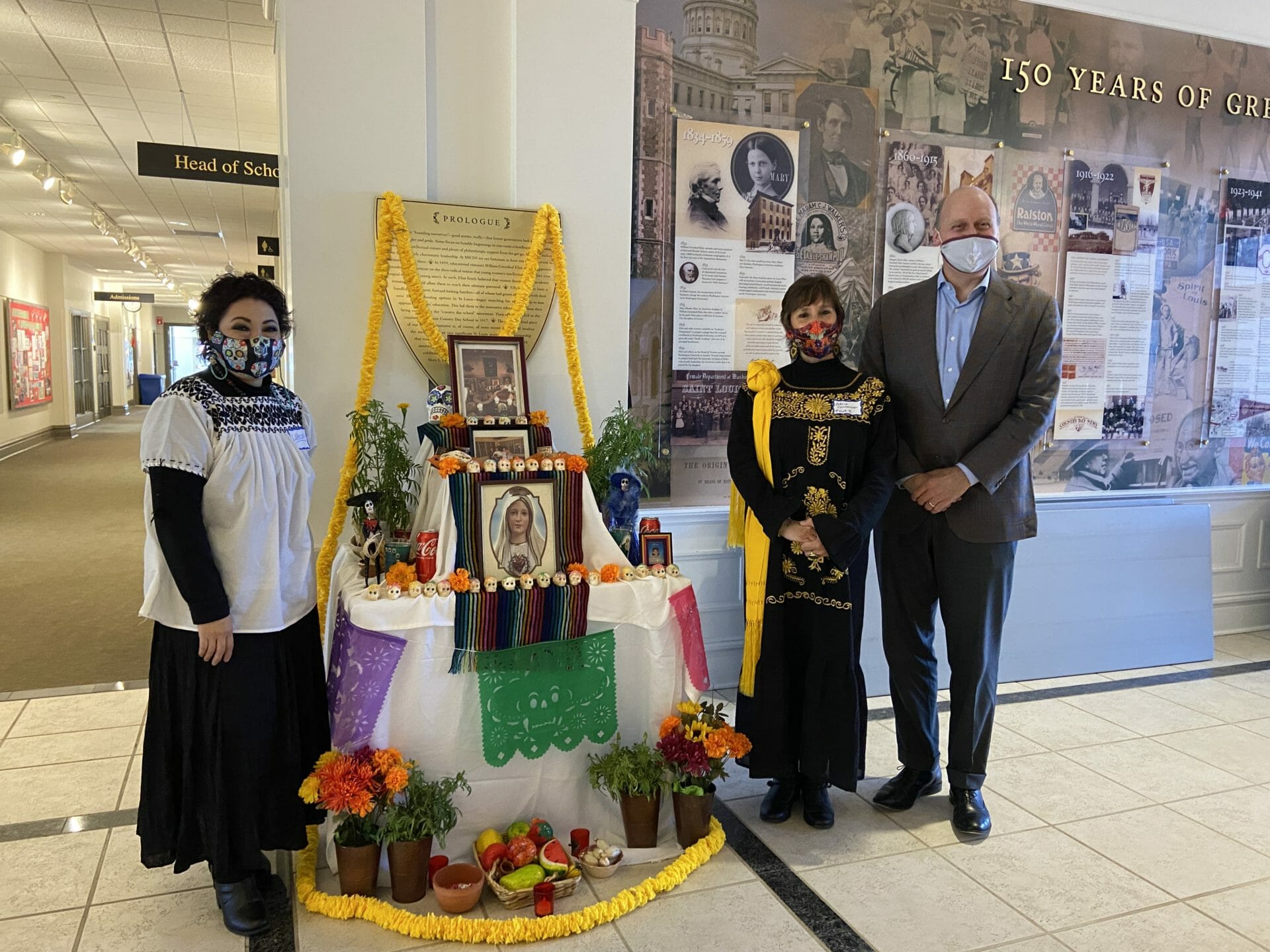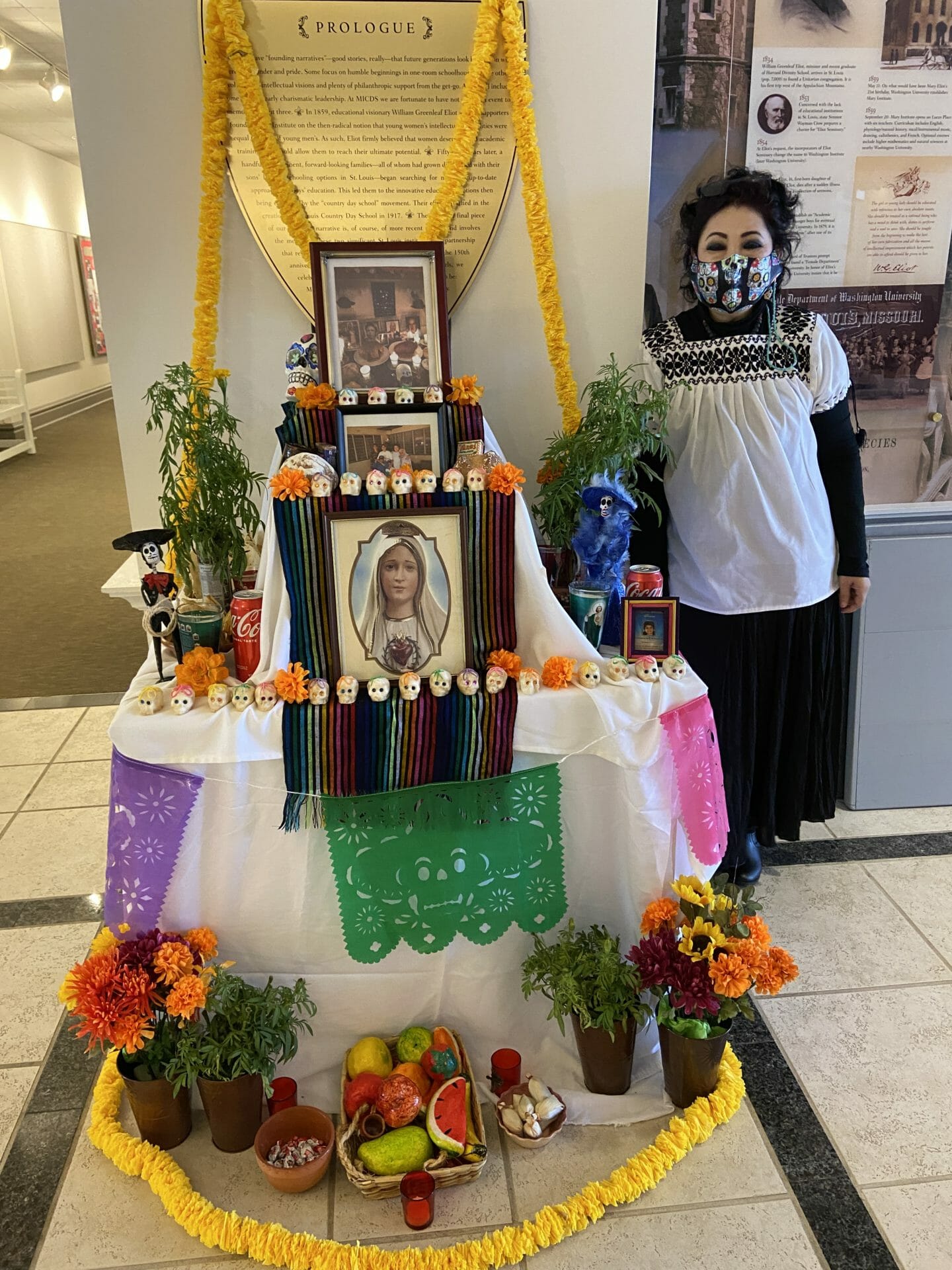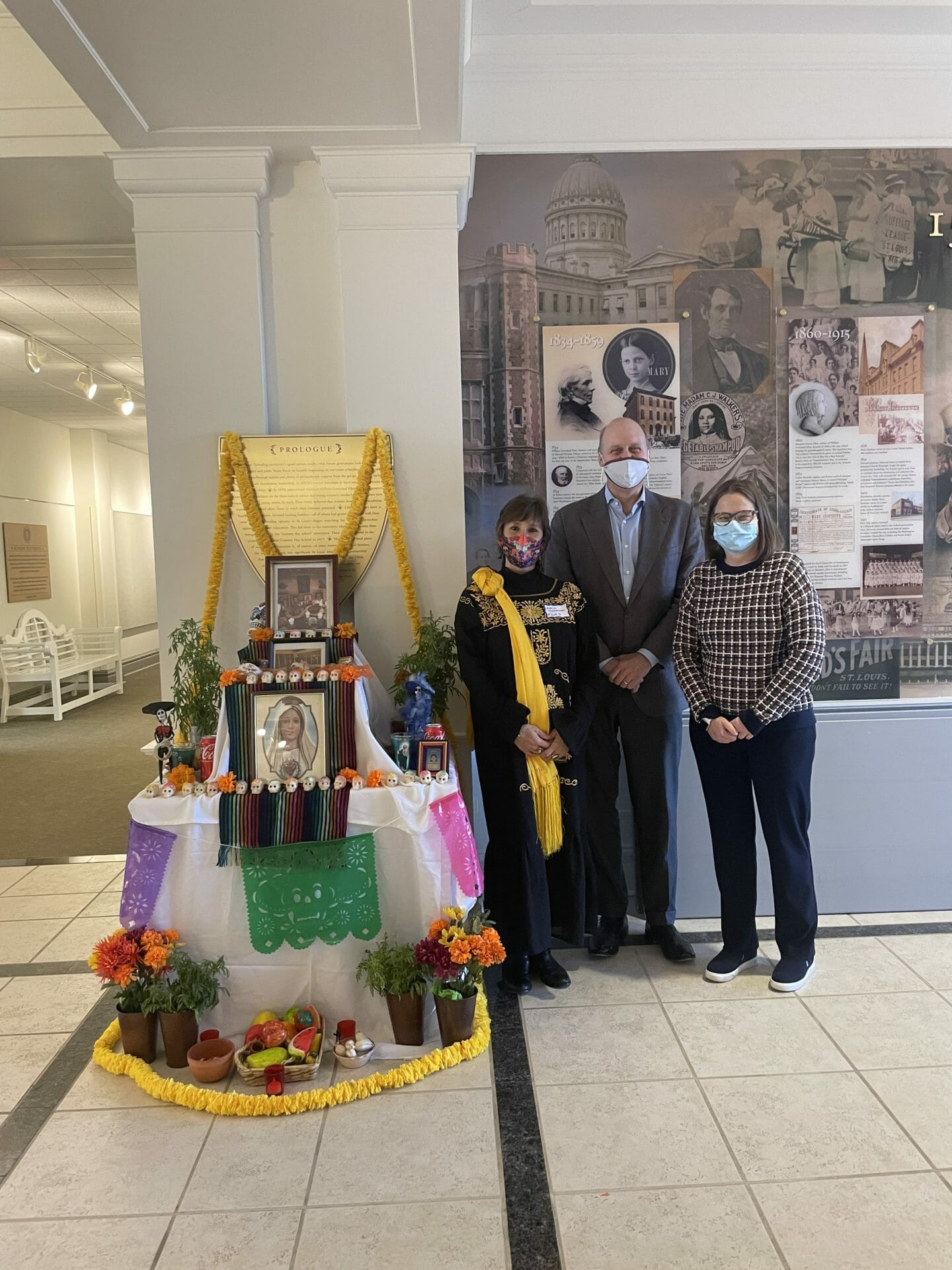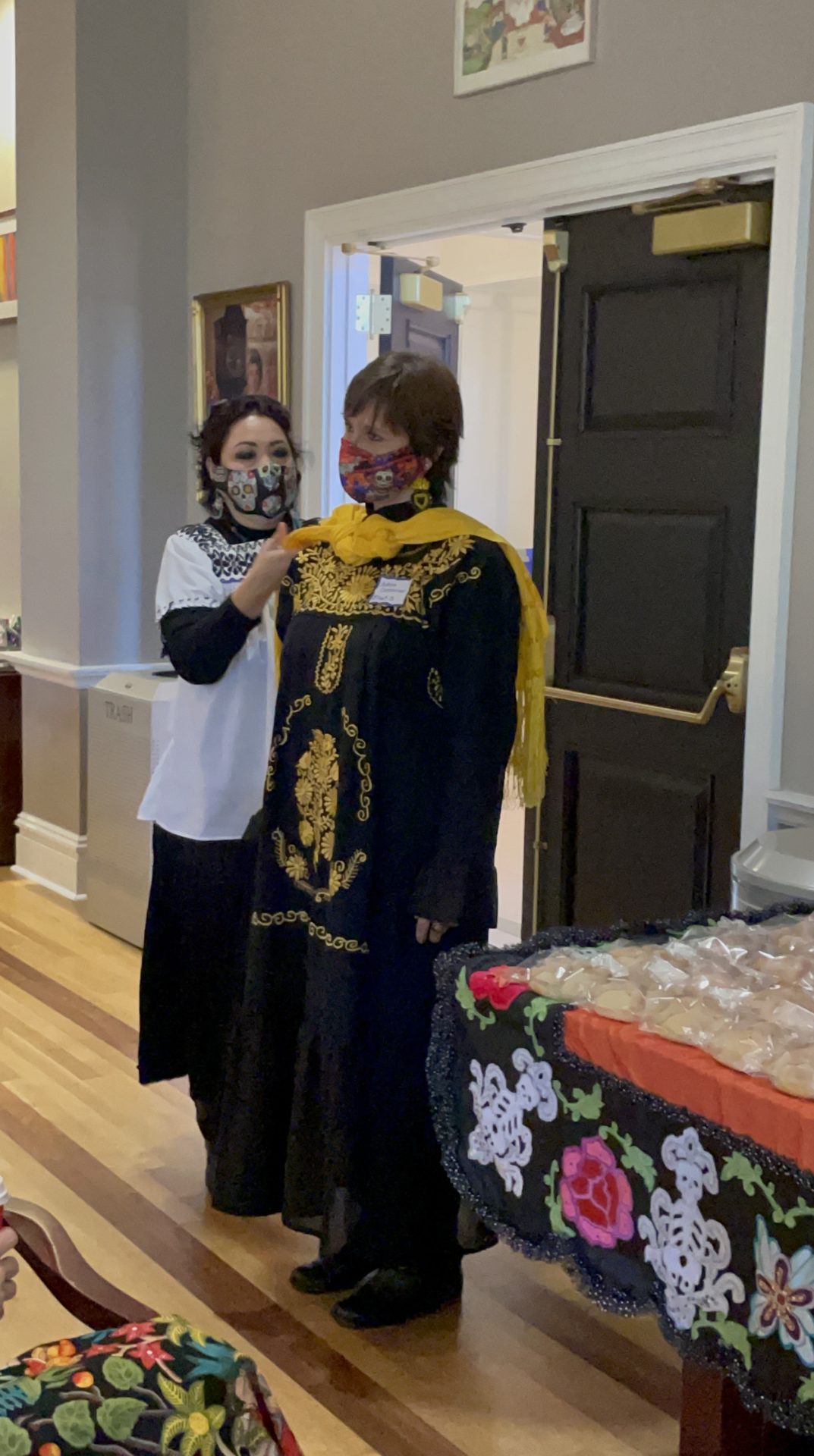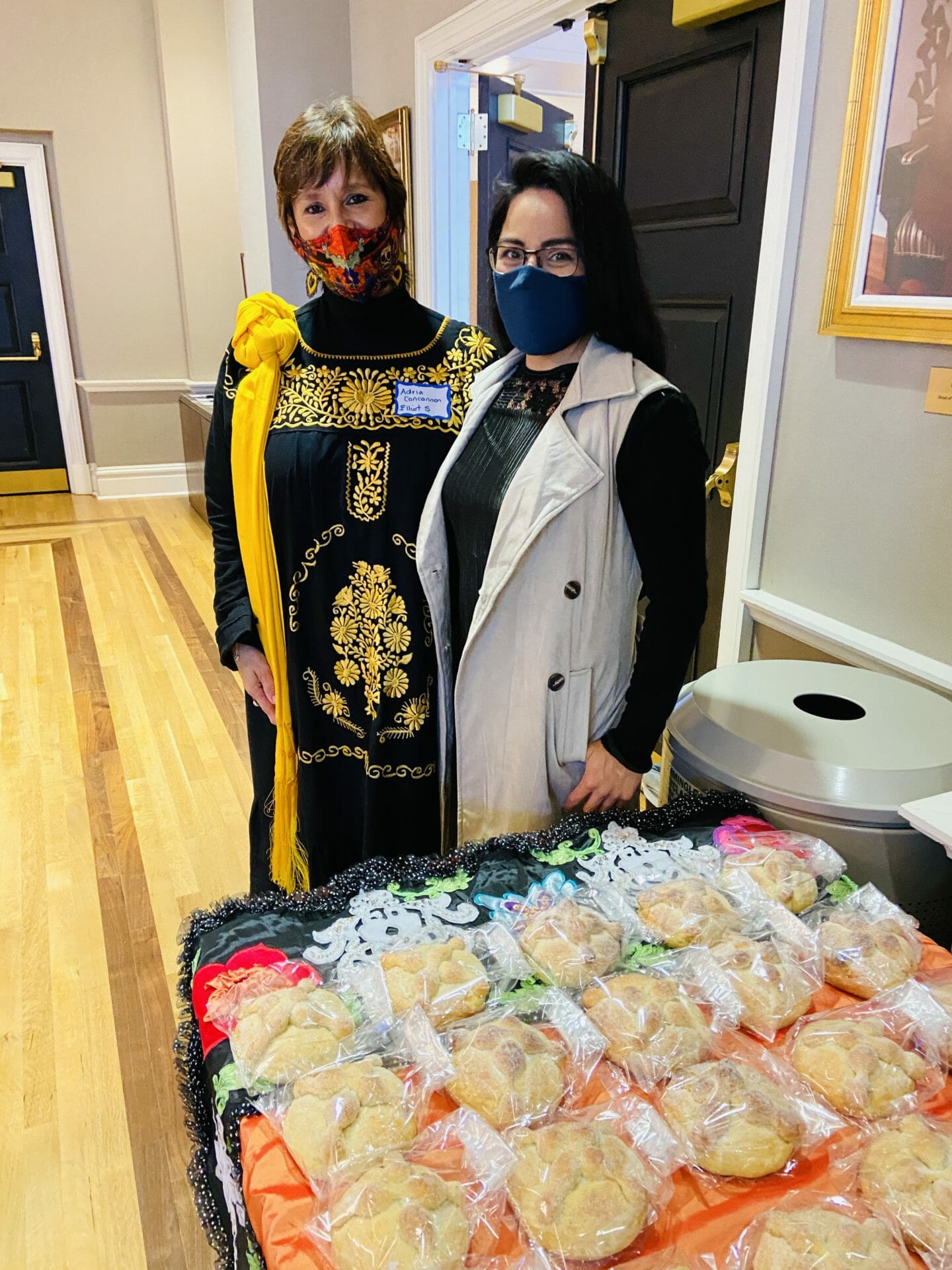By MICDS Parent Adria Concannon
On Friday, November 5, the MICDS Parents Association Passport Series welcomed parents to an in-person presentation of the traditional Mexican Day of the Dead celebration. Day of the Dead (Día de los Muertos), is a Mexican holiday where families welcome back the souls of their deceased relatives for a brief reunion that includes food, drink, and celebration. It is a blend of Mesoamerican ritual, European religion, and Spanish culture. The holiday is celebrated each year from October 31 through November 2. While October 31 is Halloween, November 1 is “el Día de los Inocentes” or „the day of the children“ and All Saints Day. November 2 is „Día de los Muertos“ or „Day of the Dead“ and All Souls Day.
As part of the celebration, offerings to the dead are called the ofrenda (offering). These are altars filled with items dedicated to loved ones who have passed on. They are an essential component of any Dia de los Muertos celebration. Built to honor specific family members, they can be large and elaborate or small and personal. Ofrendas are one of the most important and meaningful symbols of the holiday because it is believed that the souls of the family members return on this holiday. Leticia Seitz, owner of Arte Rojo, set a beautiful altar by the entrance of Olson Hall with all of the necessary elements to help the souls journey to the land where they can finally rest. According to the Aztec tradition, this land is called Mictlan.
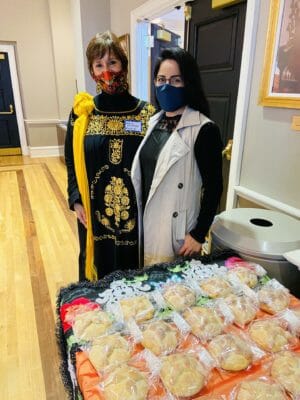 Adria Concannon, guest speaker and parent, gave a presentation of the Day of the Dead focusing on the bread, pan de muerto. The bread not only is a culinary part of this celebration, but its meaning is essential. As part of the celebration, loved ones eat pan de muerto as well as the relative’s favorite foods. Pan de Muerto is a sweetened, soft bread shaped like a bun, often decorated with bone-shaped phalange pieces. The bones represent the deceased one (difuntos or difuntas) and there is normally a baked teardrop on the bread to represent Goddess Chimalma’s tears for the living. The bones are represented in a circle to portray the circle of life. In modern days, this bread has taken many different shapes and is enjoyed in many parts of the world. It is also topped with sugar. Many debate about the origin of this unique food—if it was a Spanish tradition, a pre-Colombian culture, or both. The fusion of these cultures has resulted in what Mexico is today.
Adria Concannon, guest speaker and parent, gave a presentation of the Day of the Dead focusing on the bread, pan de muerto. The bread not only is a culinary part of this celebration, but its meaning is essential. As part of the celebration, loved ones eat pan de muerto as well as the relative’s favorite foods. Pan de Muerto is a sweetened, soft bread shaped like a bun, often decorated with bone-shaped phalange pieces. The bones represent the deceased one (difuntos or difuntas) and there is normally a baked teardrop on the bread to represent Goddess Chimalma’s tears for the living. The bones are represented in a circle to portray the circle of life. In modern days, this bread has taken many different shapes and is enjoyed in many parts of the world. It is also topped with sugar. Many debate about the origin of this unique food—if it was a Spanish tradition, a pre-Colombian culture, or both. The fusion of these cultures has resulted in what Mexico is today.
As part of this presentation, Fernanda Perez from Mexico City made pan de muerto to share with the staff and parents who attended. By the end of the event, this delicious treat was savored with coffee and tea.
Leticia also taught the participants how to braid shawls and scarves to enhance their look. Her shop, Arte Rojo, is the perfect place to journey into Mexico’s rich culture while admiring and acquiring Mexican arts and crafts and colorful folkloric clothing.
Many thanks to our Passport Series co-chairs, Ayumi Cullen and Ashley Payne, and to Erin Hamill, Director of Global Learning & Upper School Community Service. Thanks also to Fernanda Perez for the delicious bread, Leticia Seitz for setting up the beautiful altar and transforming scarves into works of art, and Adria Concannon for her presentation. ¡Feliz Día de los Muertos!
